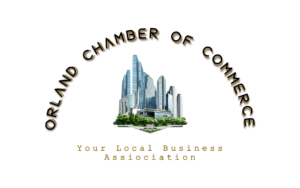Economic development is the process by which emerging economies become advanced economies. It is more than just job creation; it includes enhancing literacy, education, health and life expectancy.
Economic developers work to attract new business, recruit and retain existing businesses and facilitate small-business growth. They also pursue international opportunities to support local economic development.

Definition
Economic development is a government’s undertaking to meet broad economic objectives such as price stability, high employment, and sustainable growth. These goals are achieved through various policies such as monetary, fiscal, and trade policies.
Economic growth is a critical condition for economic development. However, growth alone cannot guarantee development because it can also lead to negative effects such as unemployment, overpopulation, poverty line, poor health, and exploitation of natural resources.
Economic developers promote and implement programs that encourage private investment. These programs include business tax incentives, entrepreneurship and small business support, low-income housing initiatives, and technology transfer. The community benefits of these programs include more jobs, higher wages for the workforce, and increased revenue for local governments to provide services. This is known as the “economic multiplier effect.” A growing economy increases revenues for local governments to invest in the infrastructure, businesses, and services that the citizens of a community need. This is the primary goal of economic development.
Purpose
Economic development involves creating jobs in a community and providing assistance to companies that create those jobs. These activities help a city compete with other cities for business investment and attract residents that want to work in those industries.
The goal of economic development is to increase the prosperity and quality of life of a community. Ideally, economic development projects should produce more than just jobs. They should also increase the wages that people earn, which increases economic activity. This should ultimately lead to higher levels of real national income, and improved social well-being.
One of the primary functions of economic developers is to develop a vision for the future of a community. This can be accomplished through a process known as a SWOT analysis, where stakeholders assess the strengths, weaknesses, opportunities and threats for economic growth. Local leaders can then use this information to develop a strategic plan, commonly known as a Comprehensive Economic Development Strategy (CEDS).
Methods
There are many methods for economic development. One way is to create and manage businesses to exploit market and business opportunities. Another method is to fund economic development programs using tax revenue.
A third method is to use industrial strategies that increase productivity. This can be done by partnering with other businesses or combining companies to reduce costs and expand opportunities.
Rostow’s stages of development are an important model to consider when discussing economic development. This model shows how a country can progress from underdeveloped to developed countries.
However, Rostow’s model has been criticized for focusing too much on differences in economic geography and for not taking into account cultural aspects of a country. It has also been criticized for not including the environmental effects of economic growth. A more accurate measure of a country’s development is the human development index (HDI). This includes a calculation of real income per capita, life expectancy and education levels.
Results
The primary indicator of economic development is a country’s GDP per capita divided by its mid-year population. This figure is based on the gross domestic product calculated as the sum of all industrial production, plus product taxes and minus subsidizes not included in the value of goods produced, without depreciation or depletion of natural resources.
The EDCI provides stakeholders an accessible breakdown and evaluation of the critical elements that contribute to county-level economic development capacity. This tool, developed by EDA and Argonne National Laboratory, uses publicly available data to assess each of the capacity areas.
The model demonstrates that the more jobs are created, the higher a community’s GDP will grow and that this growth will also increase a community’s ability to invest in more sustainable energy technologies. This model further reveals that rapid human capital development increases the quality of employment generation, and the economy will adjust upwards to its long-term equilibrium state. It also uncovers a short-run coefficient that highlights feedback necessary in a relative level of investment to bring back the economy to this equilibrium.
